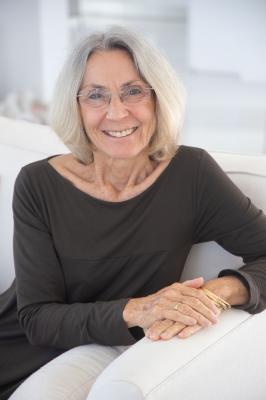Currently the Constitution of the Noosa Biosphere Reserve Foundation (NBRF) dictates that membership is open only to the NBRF’s own directors and ex-directors – a ‘closed shop’ model that neither aligns with UNESCO’s concept of involving local communities in management nor with its emphasis on promoting innovative approaches to economic development.
The citizens of Noosa can still be hopeful that NBRF chair Rex Halvorsen’s new approach to Biosphere leadership will address these two important but neglected matters. This can be done easily by changing its Constitution, especially to enable the inclusion of members from the community at large.
In 2014, soon after de-amalgamation, then mayor Noel Playford and councillor Tony Wellington set about dismantling the original Noosa Biosphere Ltd (NBL).
Wellington had persistently claimed in his Gumshoe newsletter that NBL had “failed miserably” to garner sponsorship, that it had “shown little interest in pursuing UNESCO’s objectives” and that it had not delivered on “the promise made to UNESCO and the Noosa community that the Biosphere would be run by a democratic, community-based Incorporated association”.
So, in 2014, when then councillors Playford and Wellington had the opportunity to implement their own ideas for the Biosphere, they dismantled the former NBL and established the new NBRF with its own Constitution. The problem was – and remains – that it has the same deficiencies they accused its predecessor of having. It was not the model UNESCO thought it would get.
The Paris-based UNESCO was always clear on its intent for the Man and Biosphere Program under which the Noosa Biosphere operates:
“Man and the Biosphere combines the natural and social sciences, economics and education to improve human livelihoods and the equitable sharing of benefits, and to safeguard natural and managed ecosystems, thus promoting innovative approaches to economic development that are socially and culturally appropriate, and environmentally sustainable.”
The emphasis was clearly on people and economic development in compatibility with the environment. UNESCO went further to prescribe that Biosphere reserves should have “highly innovative and participative governance systems [ … ] focusing on a multi-stakeholder approach with particular emphasis on the involvement of local communities in management“.
However, when the NBRF Constitution was approved by Noosa Council in November 2014 it stated the NBRF’s principal purpose as “protecting and enhancing the natural environment” and its membership consisting only of its directors and ex-directors. The community at large had been effectively cut out from participation.
Noosa Council’s initial $250,000 annually to NBRF for grants came from the Environment Levy, so was constrained to use for environmental purposes. Much later an $80,000 economic grant was utilised.
Once NBRF was incorporated as a company under its own Constitution, the CEO regularly reminded councillors that the Council has no authority to influence it or its decisions. The only roles for the Council were providing it with funds and appointing a Councillor as a director.
In those early days, the Council also gave seed funding to the establishment of a separate organisation, the Noosa Community Biosphere Association (NCBA), which was purported to represent the public. But this organisation gave the community no voice in the NBRF, where all the authority and funding resided. The NBCA was, in effect, a sop.
When I was elected to Noosa Council in early 2016, there was much community concern and controversy focused on NBRF. Finally, in June 2017, then mayor Wellington distanced himself by stepping aside from being a NBRF director, handing the role to his deputy Frank Wilkie.
In August 2018 the Council approved the 10-Year Periodic Review of NBRF as required by UNESCO. It was later disclosed that the contractor who prepared the draft report was bullied and undermined, and the final report was rewritten by a senior councillor to reflect a better image of Noosa Council and the NBRF.
Around the same time there was significant community anger about NBRF distributing a disproportionate number of grants to community organisations associated with its own directors and former directors. As a result, the Council decided to withdraw the grant funding power from NBRF and distribute environmental grants itself. But the Council continues to fund NBRF’s operations by $100-$140,000 a year.
Despite being strongly urged to democratise its membership and open itself to community participation, NBRF continues to be a closed shop which receives operational funding drawn from council’s general rates. The Noosa community still cannot become members or have a say in its operations or priorities. And the Constitution is still biased to favour environmental initiatives rather than UNESCO’s vision of people living sustainably and prosperously within the environment.
The current NBRF Directors were not party to this history, however should be expected to understand UNESCO’s mandate and the need to operate according to “participative governance systems”. It may take some courage, but the Board owes it to the Noosa community that funds its operations and activities to render these necessary changes. And it is entirely within NBRF’s power to do this.







